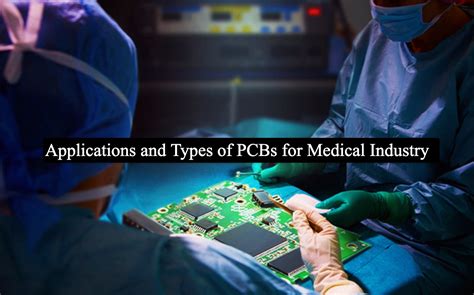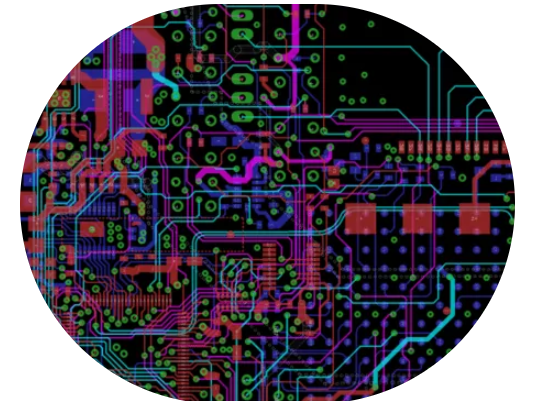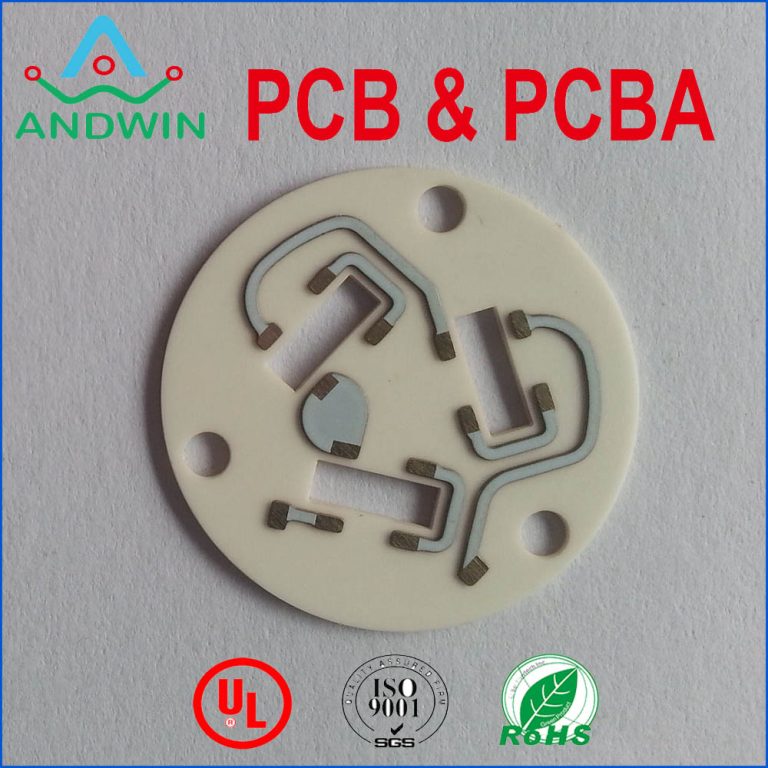Precision PCB Manufacturing for Critical Medical Devices

Key Takeaways
When navigating PCB manufacturing for medical devices, understanding the intersection of technical precision and regulatory compliance is non-negotiable. The stakes are uniquely high in this field—your designs must meet zero-failure thresholds while adhering to ISO 13485 and IEC 60601 standards. Whether you’re prototyping a wearable monitor or scaling production for imaging systems, partnering with experienced PCB manufacturing companies ensures your boards withstand the rigors of critical care environments.
A key consideration is balancing PCB manufacturing cost with lifecycle reliability. For example, while standard FR-4 substrates might suit consumer electronics, medical-grade designs often require high-frequency laminates or ceramic-filled materials to ensure signal integrity in MRI machines or pacemakers. Here’s a quick comparison of critical factors:
| Design Factor | Standard PCB | Medical-Grade PCB |
|---|---|---|
| Material Selection | FR-4 Dominant | High-Frequency Laminates |
| Tolerance Precision | ±10% | ±2% or tighter |
| Testing Protocols | Basic QA | 100% Automated Optical + X-Ray |
| Regulatory Compliance | Minimal | ISO 13485, FDA Part 11 |
Your choice of PCB manufacturing business impacts more than just upfront expenses—it defines long-term scalability. Leading providers integrate design-for-manufacturability (DFM) feedback early, minimizing redesign cycles. For instance, optimizing via placement in cardiac monitors can reduce impedance variations by up to 30%, directly enhancing signal accuracy.
When evaluating partners, prioritize firms with proven expertise in high-reliability assembly and global supply chain resilience. This ensures on-time delivery even during component shortages—a critical factor when producing life-saving equipment. Additionally, transparent PCB manufacturing cost models help avoid hidden fees, allowing you to allocate resources toward iterative testing or biocompatible conformal coatings.
Ultimately, success hinges on aligning your innovation roadmap with a manufacturer’s technical capabilities. By investing in partnerships that prioritize traceability and risk mitigation, you secure not just components, but a foundation for advancing medical technology.
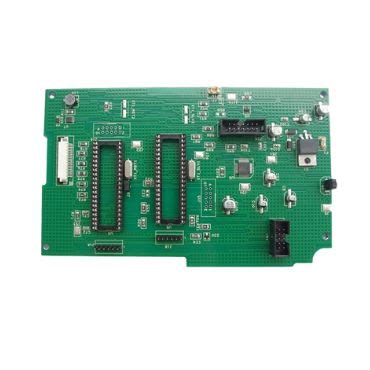
Precision PCB Engineering Essentials for Medical Device Innovation
When developing life-saving medical technologies, every micron of a printed circuit board (PCB) matters. PCB manufacturing for medical devices demands uncompromising precision—not just in design, but in material selection, fabrication processes, and compliance with stringent regulatory standards. Unlike consumer electronics, medical PCBs must operate flawlessly in environments where humidity, temperature fluctuations, and electromagnetic interference are constant threats. This is why partnering with experienced PCB manufacturing companies that specialize in medical-grade solutions becomes non-negotiable.
A critical starting point is understanding how PCB manufacturing cost intersects with performance requirements. For instance, high-frequency substrates like Rogers 4350B may raise initial expenses but ensure signal integrity in imaging systems. Similarly, rigid-flex PCBs reduce failure points in wearable monitors, though their production requires specialized expertise.
"Selecting materials with proven biocompatibility and thermal stability isn’t optional—it’s a baseline for patient safety."
To balance innovation with reliability, your design strategy should prioritize:
- Impedance control for consistent signal transmission in diagnostic equipment
- Embedded component technology to minimize size while maximizing functionality
- Automated optical inspection (AOI) protocols to catch defects at sub-millimeter scales
Leading medical PCB manufacturers leverage laser-drilled microvias and conformal coatings to meet IEC 60601 standards, but true engineering excellence lies in proactive collaboration. From prototyping to scale-up, your PCB manufacturing business partner should provide failure mode analysis and thermal modeling to preempt field issues.
Three often-overlooked considerations include:
- Cleanroom certification for assembly processes involving implantable devices
- Traceability systems that log every production parameter for audit compliance
- Accelerated life testing that simulates decade-long usage in months
By aligning your design phase with manufacturing realities early, you avoid costly re-spins and delays. For example, specifying 6-layer boards during prototyping helps maintain consistency when transitioning to volume PCB manufacturing, while Design for Manufacturability (DFM) checks ensure components stay within placement tolerances.
The convergence of miniaturization and connectivity in modern medical devices—from smart inhalers to robotic surgery tools—requires PCBs that perform beyond commercial-grade thresholds. It’s not just about building circuits; it’s about engineering mission-critical foundations that healthcare providers can trust implicitly.
How Medical-Grade PCBs Ensure Reliability in Critical Care Technologies
When lives depend on split-second accuracy, the PCB manufacturing process must meet standards far beyond commercial electronics. Medical-grade PCBs form the backbone of devices like ventilators, infusion pumps, and cardiac monitors, where failure isn’t an option. Unlike consumer electronics, these boards operate in environments with extreme temperature fluctuations, electromagnetic interference, and constant mechanical stress. Precision here isn’t just about performance—it’s about ensuring every signal, connection, and power delivery remains flawless under life-or-death conditions.
Leading PCB manufacturing companies address this challenge through multi-layered safeguards. They start with substrates like polyimide or ceramic-filled laminates, chosen for thermal stability and moisture resistance. Trace widths and spacing are meticulously calculated to prevent arcing in high-voltage applications, while conformal coatings protect against contaminants in sterile environments. But material selection is only half the battle. Advanced techniques like automated optical inspection (AOI) and X-ray testing verify solder joint integrity, catching defects invisible to the naked eye.
Balancing PCB manufacturing cost with uncompromised quality requires strategic design choices. For instance, embedding critical components within the board reduces failure-prone connectors, while rigid-flex designs minimize wiring errors in compact devices. However, cutting corners on testing or materials risks catastrophic outcomes. Reputable manufacturers offset expenses through economies of scale, leveraging global production networks to maintain affordability without sacrificing compliance with ISO 13485 or IPC Class 3 standards.
What separates a reliable PCB manufacturing business in the medical sector is its commitment to traceability. Each batch undergoes rigorous documentation, tracking materials, processes, and test results. This ensures swift root-cause analysis if issues arise post-deployment. Additionally, partnerships with device makers often extend beyond production, involving co-design teams that align PCB capabilities with evolving clinical needs—whether it’s enhancing signal clarity in MRI-compatible equipment or extending lifecycle durability for implantables.
Ultimately, the reliability of critical care technologies hinges on treating PCB manufacturing as a collaborative engineering discipline, not just a commodity service. By integrating stringent quality controls, adaptive design practices, and transparent supply chains, medical-grade PCBs become silent guardians of patient safety—components you’ll never see but can always trust.
From Prototype to Production: Scaling Medical PCB Manufacturing Globally
Navigating the journey from prototype to full-scale production in PCB manufacturing requires a strategic balance of technical expertise and operational agility. For medical devices, where reliability is non-negotiable, regulatory compliance and traceability become critical pillars at every stage. When developing prototypes, PCB manufacturing companies prioritize design validation to ensure functionality under real-world conditions—simulating sterilization cycles, moisture exposure, and electromagnetic interference. This phase often involves iterative testing, where even minor adjustments to trace widths or material selection can significantly impact performance.
Scaling to high-volume production introduces unique challenges. While prototyping focuses on precision, mass manufacturing demands efficiency without compromising quality. Leading PCB manufacturing businesses leverage automated optical inspection (AOI) systems and AI-driven defect detection to maintain consistency across batches. However, managing PCB manufacturing cost becomes a delicate equation: over-engineering raises expenses, while cutting corners risks device failure. Strategic partnerships with suppliers for medical-grade laminates and adhesives help stabilize material costs, while economies of scale reduce per-unit pricing after initial tooling investments.
Global expansion adds another layer of complexity. Medical device OEMs often require multi-regional compliance, meaning PCB manufacturing partners must hold certifications like ISO 13485, FDA registration, and CE marking. Regional regulations also influence material sourcing—for example, RoHS-compliant components are mandatory in the EU, while China’s GB standards dictate specific testing protocols. To ensure on-time delivery, top-tier manufacturers deploy distributed production hubs, reducing logistical bottlenecks and tariffs. Real-time supply chain visibility tools allow clients to track progress across time zones, ensuring seamless coordination between design teams in Silicon Valley and assembly lines in Southeast Asia.
The transition from low-volume prototyping to global production hinges on a manufacturer’s ability to integrate flexibility with standardization. Modular production lines that accommodate both small batches and high-volume runs enable faster response to design changes or market demands. By aligning with PCB manufacturing companies that offer end-to-end services—from DFM (Design for Manufacturability) reviews to post-production lifecycle support—you mitigate risks while accelerating time-to-market for life-critical devices.
Design Strategies for High-Reliability Medical Electronics Assembly
When designing medical electronics for critical applications, every decision must prioritize lifesaving functionality and uncompromising reliability. PCB manufacturing for medical devices demands a unique balance of precision engineering and risk mitigation, requiring strategies that account for both technical and operational challenges.
Start by integrating design-for-manufacturability (DFM) principles early in the development phase. This involves collaborating with experienced PCB manufacturing companies to identify potential failure points, such as trace width inconsistencies or impedance mismatches, which could compromise performance in high-stress environments like surgical robots or patient monitors. For instance, using failure modes and effects analysis (FMEA) helps quantify risks and refine layouts before prototyping.
Thermal management is another critical consideration. Medical devices often operate in confined spaces with strict power constraints, making heat dissipation a priority. Opt for materials with high thermal conductivity, such as ceramic-filled laminates, and work with your PCB manufacturing partner to simulate thermal loads during the design phase. This proactive approach minimizes the risk of overheating, which directly impacts both device longevity and PCB manufacturing cost by reducing post-production rework.
Redundancy and fault tolerance are non-negotiable in life-critical systems. Dual-circuit designs or embedded self-test features ensure continuous operation even if a component fails. However, implementing these safeguards requires careful planning to avoid unnecessary complexity that could inflate PCB manufacturing business expenses. Partnering with manufacturers specializing in medical-grade production ensures access to advanced technologies like laser-drilled microvias or HDI layouts, which enable compact, multi-layered designs without sacrificing reliability.
Finally, rigorous testing protocols must align with ISO 13485 and IEC 60601 standards. Accelerated life testing, combined with environmental stress screening, validates designs under real-world conditions. By embedding testability features—such as built-in self-test (BIST) circuits—you streamline quality assurance while maintaining scalability for global PCB manufacturing demands.
When partnering with PCB manufacturing companies, prioritize transparency in material traceability and process validation. This ensures compliance with medical regulations while creating a foundation for long-term collaboration, ultimately reducing PCB manufacturing cost through optimized production workflows and shared expertise.
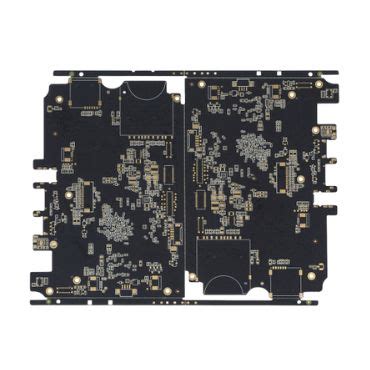
Quality Control Standards in Medical PCB Fabrication and Testing
When developing PCB manufacturing solutions for medical devices, you need systems that go beyond industrial-grade benchmarks. Life-critical applications demand multilayer safeguards, starting with ISO 13485 certification – the gold standard for medical device quality management. Leading PCB manufacturing companies implement 23-stage inspection protocols, combining automated optical inspection (AOI) with impedance testing and thermal cycling to simulate decade-long operational stresses.
A key differentiator lies in material traceability. Medical-grade substrates require full documentation of glass transition temperatures, copper purity levels, and solder mask biocompatibility. This granular tracking prevents batch contamination risks while meeting FDA 21 CFR Part 820 requirements. For high-density interconnects in implantable devices, manufacturers employ microsection analysis to verify plating uniformity down to 1µm tolerances.
Cost considerations in PCB manufacturing cost models must account for these rigorous processes. While commercial electronics might tolerate 500 ppm defect rates, medical boards necessitate Six Sigma methodologies targeting <0.1 ppm. Advanced PCB manufacturing business operations integrate AI-powered X-ray inspection systems that detect voids in 01005-size components – a capability that adds 18-22% to baseline testing costs but reduces field failure risks by 94%.
Transitioning from prototype validation to production-scale quality assurance requires harmonizing IEC 60601-1 safety standards with J-STD-001 space-grade soldering criteria. You’ll find top suppliers using statistical process control dashboards that track 120+ real-time parameters, from cleanroom particulate counts to reflow oven nitrogen purity. This dual focus on process validation and output verification ensures every cardiac monitor PCB or infusion pump controller meets its specified 99.999% uptime requirement.
The strategic advantage emerges when these quality systems interface with supply chain partners. Medical PCB manufacturing companies that maintain AS9100-certified component sourcing networks can guarantee material authenticity while containing PCB manufacturing cost escalations through vendor-managed inventory programs. It’s this ecosystem-wide commitment to traceable excellence that transforms compliance checklists into tangible patient safety outcomes.
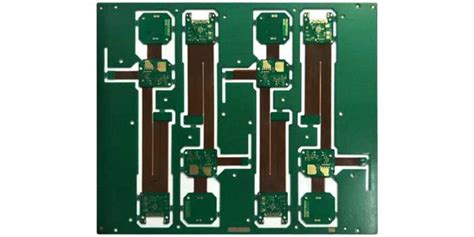
Ensuring On-Time Delivery in Life-Saving Medical Device Manufacturing
When lives depend on the reliability of medical devices, delays in PCB manufacturing become more than a logistical hiccup—they risk patient outcomes. For mission-critical applications like implantable defibrillators or ventilators, every step from prototyping to mass production must align with stringent timelines. Leading PCB manufacturing companies address this challenge by integrating predictive scheduling and multi-site production capabilities, ensuring that even complex designs transition seamlessly from lab validation to global distribution.
A key factor in maintaining delivery reliability lies in optimizing supply chain resilience. Medical-grade PCB manufacturing business models prioritize dual sourcing for specialized substrates and components, mitigating risks from geopolitical disruptions or material shortages. Advanced demand forecasting tools analyze historical data and real-time orders, allowing manufacturers to pre-allocate capacity for urgent medical projects. This proactive approach directly impacts PCB manufacturing cost efficiency, as last-minute expedited shipping or retooling expenses are minimized through intelligent planning.
To further safeguard timelines, ISO 13485-certified partners implement closed-loop communication systems between design engineers and production teams. Automated alerts for potential bottlenecks—whether in chemical etching tolerances or impedance testing—enable immediate corrective actions. For instance, a cardiac monitor PCB requiring 20-layer HDI construction might undergo parallel processing across facilities in North America and Asia, compressing lead times by 35% while maintaining traceability.
The stakes in medical PCB manufacturing demand more than just speed. Rigorous first-pass yield benchmarks (often exceeding 98%) ensure boards meet functional specifications without rework delays. Real-time dashboards provide healthcare OEMs with granular visibility into production stages, from solder mask application to final electrical testing. By marrying precision with operational agility, trusted manufacturers turn delivery commitments into life-saving guarantees.
Building Long-Term Partnerships Through Medical PCB Lifecycle Support
When developing medical devices, success hinges on more than just technical specifications—it requires PCB manufacturing companies that align with your long-term vision. Unlike transactional relationships, true collaboration in PCB manufacturing involves lifecycle support that extends from initial design reviews to end-of-life component management. This approach ensures your critical care technologies remain compliant, upgradable, and cost-effective over their operational lifespan.
A strategic partner integrates early into your R&D process, offering insights to optimize designs for manufacturability while balancing PCB manufacturing cost considerations. For instance, selecting materials with extended thermal stability might increase upfront expenses but reduces long-term field failures—a vital tradeoff for devices like implantable monitors. By leveraging their expertise in high-reliability assembly and regulatory documentation, you avoid costly redesigns and accelerate time-to-market.
Scalability is another cornerstone. As demand grows, your PCB manufacturing business partner must seamlessly transition from low-volume prototyping to full-scale production without compromising traceability. Advanced manufacturers achieve this through digital twin simulations and AI-driven process controls, ensuring consistency across global facilities. Regular joint audits and failure mode analyses further cement trust, turning contractual obligations into shared accountability for patient safety.
Post-production, proactive partners provide obsolescence monitoring and component lifecycle forecasting. When a key IC is discontinued, they’ll source alternatives or recommend design tweaks—safeguarding your supply chain against disruptions. This end-to-end engagement model transforms PCB manufacturing from a commodity service into a value multiplier, where iterative improvements in yield rates and testing protocols directly enhance your product’s reliability.
Ultimately, choosing a collaborator invested in your success means securing more than boards—it’s about building resilience into every heartbeat monitor, infusion pump, and surgical robot your team creates.
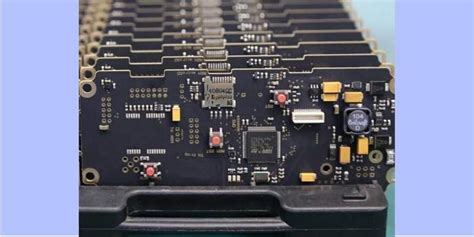
Advanced Materials and Manufacturing Techniques for Medical PCB Durability
When designing printed circuit boards for life-saving medical devices, durability isn’t optional—it’s mission-critical. Leading pcb manufacturing companies leverage advanced materials like high-Tg FR-4 and polyimide substrates to ensure boards withstand extreme thermal cycling, sterilization processes, and prolonged operational stress. These materials maintain structural integrity even in high-humidity environments, a non-negotiable requirement for equipment used in surgical suites or implantable devices.
Complementing material selection, precision pcb manufacturing techniques such as laser direct imaging (LDI) and controlled-depth drilling enable micron-level accuracy for complex multilayer designs. For example, hybrid surface finishes like ENIG (Electroless Nickel Immersion Gold) combine corrosion resistance with reliable solderability, essential for maintaining signal integrity in pacemakers or diagnostic imaging systems. Advanced automated optical inspection (AOI) systems then validate every trace and via, catching potential defects before boards enter clinical environments.
While pcb manufacturing cost factors heavily into medical device production, cutting corners on material quality or process controls risks catastrophic failures. Reputable providers balance cost-efficiency with compliance to ISO 13485 and IEC 60601 standards, often implementing design for manufacturability (DFM) principles early to reduce rework expenses. Techniques like embedded component technology not only enhance durability but also minimize board footprint—a critical advantage for portable defibrillators or wearable monitors.
For businesses scaling a pcb manufacturing business in the medical sector, investing in conformal coating systems and accelerated life testing protocols ensures products meet 10+ year lifespans required by implantable devices. Partnerships with material science labs allow continuous innovation, such as ceramic-filled laminates that dissipate heat 40% faster than standard substrates. By aligning material choices with clinical use cases—whether MRI-compatible alloys or biocompatible solders—manufacturers create solutions that survive both regulatory scrutiny and real-world demands.
The shift toward miniaturized medical IoT devices further underscores the need for hybrid approaches. Combining rigid-flex PCB architectures with 3D printing-assisted prototyping enables durable, space-efficient designs without compromising signal reliability—proving that innovation in materials and methods remains the backbone of life-critical electronics.

Conclusion
When selecting partners for pcb manufacturing in the medical field, the stakes extend far beyond technical specifications. Your choice directly impacts patient safety, regulatory compliance, and the long-term viability of life-saving technologies. Leading pcb manufacturing companies recognize that medical-grade applications demand more than just assembly—they require a fusion of precision engineering, material science, and uncompromising quality control.
The pcb manufacturing cost equation in healthcare differs markedly from consumer electronics. While efficiency matters, traceability and failure-mode analysis become non-negotiable cost drivers. Reputable providers balance economies of scale with rigorous testing protocols, ensuring every board meets IEC 60601-1 standards for electromagnetic compatibility and electrical safety. This approach minimizes recalls while protecting your pcb manufacturing business from liability risks.
As you scale production, consider how manufacturers address thermal management in implantables or moisture resistance in wearable monitors. Advanced techniques like laser-drilled microvias and high-Tg substrates often justify higher initial costs by extending product lifespans in clinical environments. Partnering with facilities offering end-to-end lifecycle support ensures consistent performance from prototyping through device retirement—a critical factor in FDA-regulated ecosystems.
Ultimately, success hinges on aligning your technical roadmap with a manufacturer’s capability to innovate while maintaining compliance. Look for partners who proactively address emerging challenges like miniaturization for surgical robotics or signal integrity in wireless patient monitors. By prioritizing collaborative problem-solving over transactional relationships, you secure not just components, but a strategic advantage in delivering reliable medical technologies.
FAQs
How do PCB manufacturing processes differ for medical devices compared to consumer electronics?
Medical-grade PCB manufacturing requires adherence to ISO 13485 and IEC 60601 standards, ensuring traceability, biocompatibility, and fail-safe operation. Unlike consumer electronics, medical PCBs undergo rigorous testing for electromagnetic compatibility (EMC) and long-term reliability in critical environments.
What factors influence PCB manufacturing cost for low-volume medical projects?
Costs depend on material selection (e.g., high-Tg laminates), layer count, and compliance certifications. Low-volume PCB manufacturing business models often prioritize precision over economies of scale, but partnering with specialized PCB manufacturing companies can optimize expenses through modular tooling and shared testing protocols.
How can manufacturers ensure quality in PCB fabrication for implantable devices?
Medical PCB manufacturing integrates automated optical inspection (AOI) and X-ray testing to detect micro-defects. Suppliers must validate materials for sterilization resistance and provide full documentation, including IPC-A-600 Class 3 compliance reports for high-reliability assemblies.
Why is global scalability challenging in medical PCB production?
Regulatory variances across markets (e.g., FDA vs. CE) and supply chain complexity demand PCB manufacturing companies to maintain multilingual technical support and regionalized testing facilities. Cross-border logistics for temperature-sensitive substrates further complicate timelines.
What certifications should you prioritize when selecting a PCB manufacturing partner?
Look for ISO 13485 (medical devices), UL 94 V-0 (flame resistance), and RoHS 3 compliance. Reputable PCB manufacturing business providers also offer risk management files (RMF) and failure mode effects analysis (FMEA) for critical applications.
Ready to Optimize Your Medical Device PCBs?
For tailored solutions that align with stringent medical standards, please click here to connect with experts specializing in high-reliability PCB manufacturing. Explore end-to-end support from design validation to volume production—ensuring compliance, reliability, and cost efficiency for your life-saving innovations.

